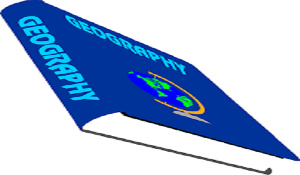Opinions of Saturday, 9 October 2021
Columnist: Michael Atuahene Djan
The discipline of Geography: Evolution and practice
The subject of geography can be traced back to hundreds or even thousands of years ago. Both ancient and modern geographers have contributed to geography, which can be associated with our environment and can be seen everywhere (Cosgrove 1989). Geographers today and geographers years ago have many different perspectives on the theory and predictive models in geography.
The importance and need for theories were often disputed, although the frequently repeated argument is that, position theory explains the laws of spatial distribution, interaction theory explains the laws of motion and spatial behaviour, and growth and development theories explain the nature of the past, present, and future. Existence, decision-making, and choice theories also explain the observable regularities and repeatable trends in the behavior of individuals, groups, and institutions.
Like other disciplines, geography has a complete set of perspectives: how geography sees the world through the lens of location, space, and scale. However, what unites most disciplines is a set of unique and coherent perspectives through which one can analyze the world.
The geography of Herodotus and Eratosthenes can be regarded as examples of early geography. The knowledge generated by the two is still related to modern expectations of geography: on the one hand, knowledge about the place, on the other hand, space science.
In addition, geography scholars urgently need to use history as a subject to further understand and connect with geography: the place of study, human beings, and the earth. Leonard Guelke (1997) re-evaluated H.C. Darby, Carl Sauer, Andrew Clark on their perspectives of geography and history through a reassessment of the theoretical principles.
His claim is that these historical geographers fail to understand history as anything other than "time" or "past", which means that historical geography is nothing more than a description of the changes that people make when they create a physical environment.
In the improvement of location theories, Geographers have also contributed a lot, that reflects actual decisions of the public and private individuals. Initially, most of the content in this research addressed the problem of the location at a specific time. For example, Morrill's (1981) work on political redistricting provides information on the many ways in which the delineation of administrative boundaries reflects and shapes political thought and practice.
Current work has focused on the evolution of industrial complexes and settlement systems. This work combines the knowledge of location theory with the study of the behaviour of individuals and institutions in space (Macmillan, 1989). On the inter-city and regional scales, geographers have studied the changes in the location and agglomeration of industries at the national level, as well as the migration patterns between cities. These studies have revealed important factors that influence the growth prospects of cities and regions.
Finally, geographic subjects are practical and can be seen in daily life; geographic research helps to better understand theoretical concepts; provides opportunities to enjoy various environments and landscapes; in addition, geographic research can cultivate an understanding of the field culture and people understanding and sensitivity, which helps to change prejudice against the community.
BIBLIOGRAPHY
Inkpen, R., and G. Wilson. 2013. Introduction. In Science, philosophy and physical geography, R. Inkpen and G. Wilson, 1-5. London, UK: Routledge.
Cresswell, T. 2013b. Early geographies. In Geographic thought: a critical introduction, T. Cresswell, 14-34. Chichester, UK: Wiley-Blackwell.
Cresswell, T. 2013c. The emergence of modern geography. In Geographic thought: a critical introduction, T. Cresswell, 35-57. Chichester, UK: Wiley-Blackwell.
Culler, J. D. (1997) Literary Theory: A Very Short Introduction, Oxford University Press, New York.
Golledge, R. G. (2001). Geographical Theories. UC Berkeley: University of California Transportation Center. Retrieved from https://escholarship.org/uc/item/1vr640bw
Cosgrove, D. E. (1989) Geography is everywhere: Culture and symbolism in human landscapes, in Horizons in Human Geography (eds D. Gregory and R. Walford), Barnes and Noble, Totowa, NJ, pp. 118–135.
Entertainment










